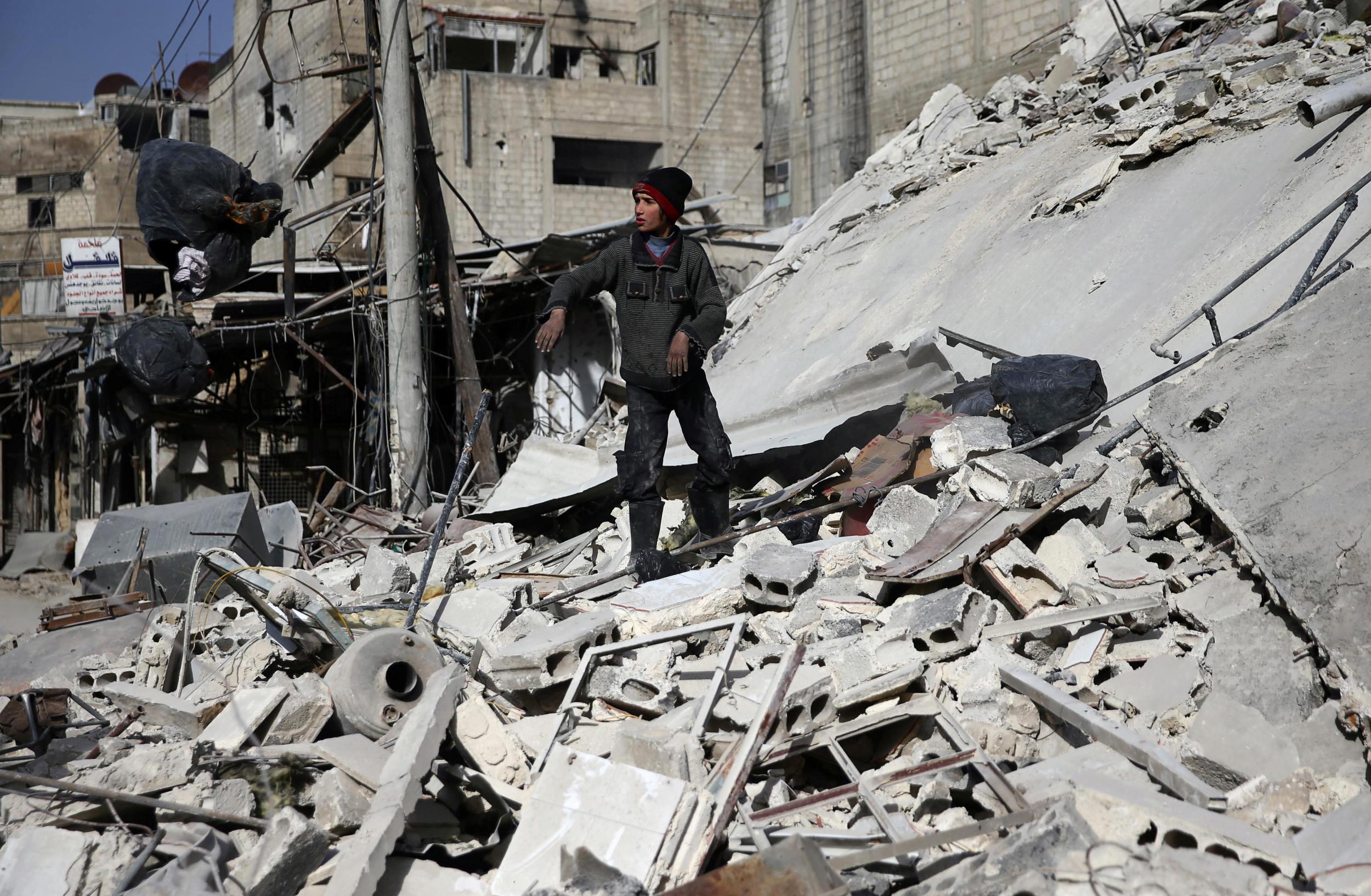Syria enters ‘new phase of horror’ as Assad pushes on with eastern Ghouta offensive
Aid workers who entered the district briefly said some residents have not seen sunlight for two weeks

Your support helps us to tell the story
From reproductive rights to climate change to Big Tech, The Independent is on the ground when the story is developing. Whether it's investigating the financials of Elon Musk's pro-Trump PAC or producing our latest documentary, 'The A Word', which shines a light on the American women fighting for reproductive rights, we know how important it is to parse out the facts from the messaging.
At such a critical moment in US history, we need reporters on the ground. Your donation allows us to keep sending journalists to speak to both sides of the story.
The Independent is trusted by Americans across the entire political spectrum. And unlike many other quality news outlets, we choose not to lock Americans out of our reporting and analysis with paywalls. We believe quality journalism should be available to everyone, paid for by those who can afford it.
Your support makes all the difference.The misery in a besieged rebel suburb of Damascus caused by the Syrian government’s relentless push to crush the area is indicative of a “new phase of horror” in Syria’s war, a top UN official has said.
Claims from President Bashar al Assad that his forces are doing all it can to protect civilians in the two-week-old offensive on eastern Ghouta are “frankly ridiculous”, human rights chief Zeid Ra'ad al-Hussein said on Wednesday.
The Russian-supported “indiscriminate, brutal attacks“ have killed at least 800 people and led most of the area’s estimated 400,000 population to seek shelter in basements from intense shelling and air strikes despite demands from the UN for a ceasefire on 24 February.
Aid workers who entered the district briefly on Monday with the first supplies Ghouta has received this year said some residents hadn't seen sunlight for two weeks.
A ground offensive has followed the air campaign, with government forces retaking more than 30 per cent of the area of towns and farms in the last few days, seeking to split the rebel enclave into two to divide fighters.
State-affiliated al-Ikhbariya TV broadcast live shots showing dense columns of smoke rising above the town of Douma as explosions and rockets could be heard flying overhead.
Humanitarian corridors out of Ghouta monitored by Syrian ally Russia have barely been used and have become a frequent target for shelling. Both side blame the other for the violence.
The Syrian government says extremists in the besieged area are keeping civilians inside as human shields, but rebel activists say those inside will not leave for fear of repercussions when they reach government-controlled areas.
On Monday the Russian Defence Ministry offered safe passage for rebels and their families who wished to leave. While it was not clear where evacuees would be taken, in previous truce deals fighters have been bussed to rural Idlib province in the country’s northeast, the last rebel stronghold.
Rebel spokesperson Wael Olwan dismissed the offer on Tuesday, calling it “psychological warfare.”
The fate of Eastern Ghouta reflects the ‘siege, starve and surrender’ Assad playbook in several other urban battles in Syria’s complex conflict.
While the region is technically covered by a 2017 de-escalation deal, the government says it is targeting al-Qaeda-linked factions in the area not covered by the agreement.
Syria’s war is entering its eighth year later this month. The fighting has killed 500,000 people and driven more than half the pre-war population of 22 million from their homes.
News agencies contributed reporting
Join our commenting forum
Join thought-provoking conversations, follow other Independent readers and see their replies
Comments